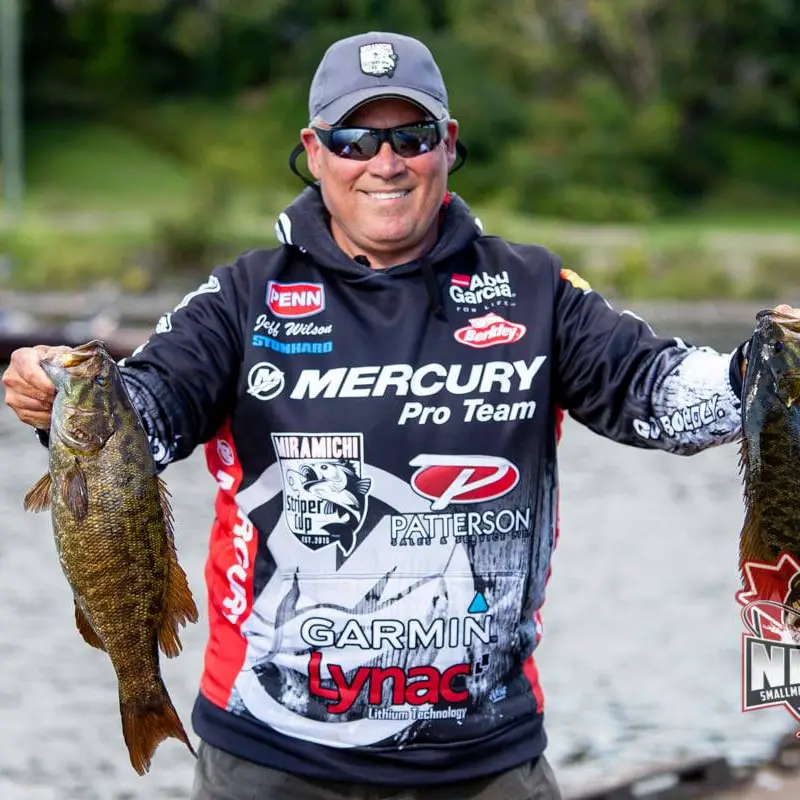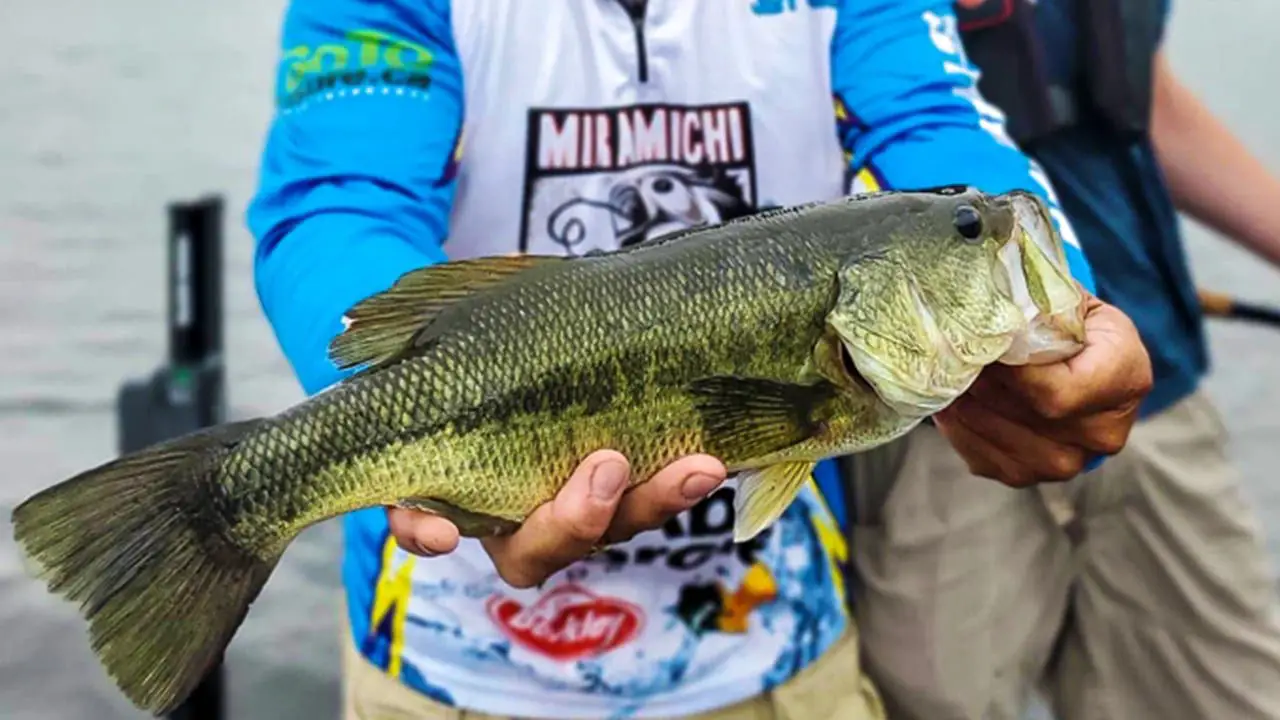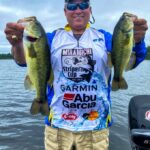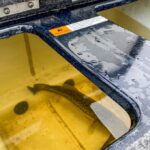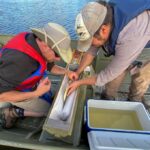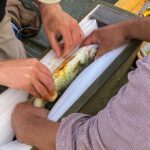Update: The original post indicated that Largemouth Bass have been in the St. John River since the late nineteenth century. In fact, Smallmouth Bass have been in the river since then—1890, to be exact. Largemouth have been in the river for only the last fifteen years.
After many years of competitive angling, my interest in fish behaviour started as a very selfish endeavour. If I could understand my quarry better, I could catch more and, as a result, win more events! I studied and read everything I could (pre-Google, mind you). Then, as I began to collaborate with the DFO (Department of Fisheries and Oceans) on the Miramichi Striper Cup, I began to listen to the fine folks who study fish for a living. This set me on a journey of learning—not to catch more, but to think about what we have and how we protect this resource for the next generation.
It was inspiring to watch the fine students from Acadia University, under the guidance of Dr. Trevor Avery and Dr. Richard Easy, looking after the Striped Bass brought to the scales during the Cup. These young people have spent countless extra hours studying and performing fieldwork to understand and protect what most of us have taken for granted.
Atlantic Canada Largemouth Bass | A New Research Project
Fast forward five years, and one of those passionate researchers, Dr. Sam Andrews, dropped me a note. Dr. Andrews had done extensive work on Gulf Coast Striped Bass. It turned out that he had several radio tags left from other projects and was given an opportunity to use them in a new project of his choice. He noted that Largemouth Bass had been reported in the Mactaquac Arm on the St. John River and that they are not natural species for New Brunswick.
Lots of questions were outstanding: How long have they been here? Where did they come from? What effects are they having on the other species?
Finally, someone was doing work on bass on the St. John River! As far as I know, there hadn’t been any research money spent on bass in the “Headpond “since 1996. This fishery’s economic impact has been taken for granted. Smallmouth Bass, for example, are considered an “invasive” species, even though they have been in the river since the late nineteenth century! Many small towns along the St. John River enjoy the economic benefits of a great bass fishery. They have actively invested in the fishery, yet we do little to understand the resource from a science perspective.
So, when Sam called, what else could I say except, “I am in! How can I help?”
The First Officially Recognized Largemouth Bass Caught in N.B.?
Sam explained that he would be deploying some trap nets and then tagging any largemouth caught in the nets. He asked if I’d be interested in angling for them simultaneously; we would tag any that I caught. Again, “For sure, I’m in.” After all, this was technically a chance to claim the first officially recognized Largemouth Bass caught in New Brunswick!
I also figured this would be an excellent opportunity to help Sam and produce a short video on the process. Viewers could then see and understand the scientific process that needs to happen. I recruited my friend Ben Woo (known by Fish’n Canada followers for his involvement with Fish East), an experienced largemouth angler and videographer—the perfect man for the job.
Atlantic Canada Largemouth Bass | Fish Tagging Method
The plan was to fish for a morning on day one, and any fish would be stored in a trap for the next morning when we would do the tagging. Sam had nets deployed earlier in the week, and when we checked on day one, there were no largemouth. We began our angling efforts with the pressure of a tournament morning! We had to catch one, or the tagging efforts might be re-deployed. Fortunately, luck was on our side and we were able to boat six largemouth in the first two hours.
The next morning, we were joined by Dr. Phil Harrison, the assisting surgeon on the tagging process. Sam and Phil went to work clipping fins, gathering scale samples and surgically inserting radio tags.
(Please note that all bass were safely released.)
Making An Investment
Sam explained that each tag is worth approximately $400, and the radio receivers are a whopping $2,500.
The scientists will return with these receivers and see where the bass have travelled. Below the Mactaquac Dam, the river is wired, and if the fish passes, it will ping a signal. Wow—what an expense to wire over 120 kilometres of river!
I instantly thought about my tournament fishing and bringing fish from fifty kilometres away to weigh in and release at the tournament headquarters. What effects has this had on bass, and do they travel home? Or even survive beyond twenty-four hours? Would it be possible to have a few tags to use on the lower St. John River and see what we can learn? We have thirty-five boats bringing samples (five fish, each) from all over the river, yet the Department of Natural Resources and research scientists never collect scale samples or fin clips that give all kinds of data?
Maybe with Sam’s help, we could start a small project to tag a few Smallmouth Bass and see how far they travel toward their “home range” and spark some interest from user groups and government to step up and help protect this resource. The last group to put a complete effort forth was the Fredericton Anglers Mactaquac study in 1996—nearly twenty-five years ago! Time to see what is happening to our fishery and put investment back into the sport we love.
Acknowledgments
Russell Easy, Ph.D., MSc | Associate Professor | Biology Honours Program Coordinator
Trevor Avery, Ph.D., P.Stat. | Associate Professor | Biology and Mathematics & Statistics
Sam Andrews Ph.D. | Research Scientist CRI, UNB
Philip Harrison Ph.D. | Research Scientist Mactaquac Aquatic Ecosystem Study
Ben Woo | Fish East




